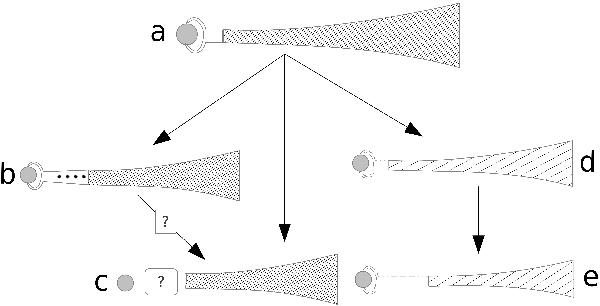Fig. 13

Sketch of the different evolutionary paths discussed in the text. The full, accreting disk is represented by the sketch “a”. Such a disk can evolve in (at least) 3 different ways: suffering strong grain growth and ending up as an accreting TD (b), suffering other inner-disk removal processes (e.g. photoevaporation, removal by massive companions of stellar or planetary origin) to result in a nonaccreting TD (c), or experiencing small-dust removal at all radii (due for instance to generalized grain growth) and resulting in a small-dust depleted disk, typically with reduced accretion (d). While accreting TD may later on transform into nonaccreting TD or even dust-depleted TD (e), dust-depleted disks would not go through a typical TD stage (b, c) even if they later on also disperse from the inside-out (e). The list of evolved structures is not supposed to be complete, and the final outcome of each evolutionary path (e.g. star with planetary system) is not constrained with our present data.
Current usage metrics show cumulative count of Article Views (full-text article views including HTML views, PDF and ePub downloads, according to the available data) and Abstracts Views on Vision4Press platform.
Data correspond to usage on the plateform after 2015. The current usage metrics is available 48-96 hours after online publication and is updated daily on week days.
Initial download of the metrics may take a while.


